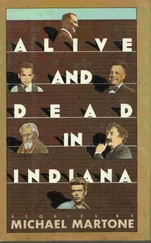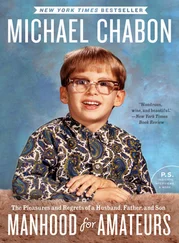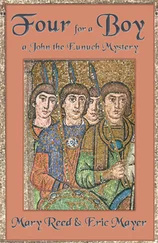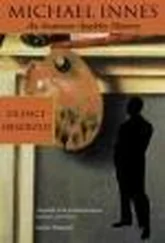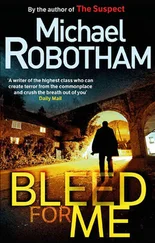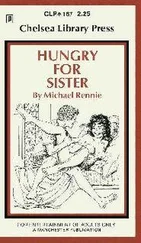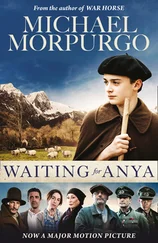Michael Martone - Four for a Quarter - Fictions
Здесь есть возможность читать онлайн «Michael Martone - Four for a Quarter - Fictions» весь текст электронной книги совершенно бесплатно (целиком полную версию без сокращений). В некоторых случаях можно слушать аудио, скачать через торрент в формате fb2 и присутствует краткое содержание. Год выпуска: 2011, Издательство: Fiction Collective 2, Жанр: Современная проза, на английском языке. Описание произведения, (предисловие) а так же отзывы посетителей доступны на портале библиотеки ЛибКат.
- Название:Four for a Quarter: Fictions
- Автор:
- Издательство:Fiction Collective 2
- Жанр:
- Год:2011
- ISBN:нет данных
- Рейтинг книги:3 / 5. Голосов: 1
-
Избранное:Добавить в избранное
- Отзывы:
-
Ваша оценка:
- 60
- 1
- 2
- 3
- 4
- 5
Four for a Quarter: Fictions: краткое содержание, описание и аннотация
Предлагаем к чтению аннотацию, описание, краткое содержание или предисловие (зависит от того, что написал сам автор книги «Four for a Quarter: Fictions»). Если вы не нашли необходимую информацию о книге — напишите в комментариях, мы постараемся отыскать её.
. In subject — four fifth Beatles, four tie knots, four retellings of the first Xerox, even the sex lives of the Fantastic Four — and in structure — the book is separated into four sections, with each section further divided into four chapterettes—
returns again and again to its originating number, making chaos comprehensible and mystery out of the most ordinary.
Four for a Quarter: Fictions — читать онлайн бесплатно полную книгу (весь текст) целиком
Ниже представлен текст книги, разбитый по страницам. Система сохранения места последней прочитанной страницы, позволяет с удобством читать онлайн бесплатно книгу «Four for a Quarter: Fictions», без необходимости каждый раз заново искать на чём Вы остановились. Поставьте закладку, и сможете в любой момент перейти на страницу, на которой закончили чтение.
Интервал:
Закладка:
Harmonic Postcard Captions
The USS Atheneum . The hermaphrodite-rigged brigantine, the USS Atheneum , plied the waters of the Wabash River during the Quasi-War with France. In 1798 the ship ran aground near present-day New Harmony, Ind., where local salvers inhabited the wreck their descendants still occupy to this day. Today, the sun-bleached hulk of the former man-o'-war, its gaffed-rigged mainsail tattered but still visible, decays pristinely at the foot of North Street just yards from the river.
The Restored Eyeglasses of Philip Johnson. The distinct owl-eyed eyewear the American architect Philip Johnson (19062005) donned in homage to Le Corbusier is placed in a glass casket reliquary housed in the Philip Johnson — designed Roofless Church of New Harmony, Ind., by Manolo Blahnik, whose Prada eyewear line underwrote the enshrinement. The congregation attending the ceremony was treated to the premiere of Philip Glass's “Requiem pour Le Monocle de Mon Oncle.“
The Lighting of the Tuning Forks. The citizens of New Harmony, Ind., illuminate the Tuning Fork Forest south of the city with strands of electric lights. First planted by the Owenite utopian community in 1825, the forest, in the right breeze, is known to “sing“ a sustained haunting note that is also said to produce an amplified sound wave capable of shattering the glass bulbs of the electric lights, throwing showers of sparks in algorithmic patterns that have been known, on occasion, to ignite the sycamores along the Wabash, themselves made famous in song.
Main Street, Old Harmony, Illinois. Founded by distraught European serfs attempting to find property that would own them, Old Harmony's streetscape features the unique asymmetrical traffic light. Out of focus in the middle distance, the water district's ovoid tower oscillates randomly in concert with the prevailing wind and the constant seismic activity generated by the nearby New Madrid tectonic fault.
The Production of the First Xerographic Copy, Recounted by Chester Carlson, Its Inventor
October 22, 1938, was the day. We were turning lead into gold. I hurried to the lab, where Otto already had a freshly prepared sulfur coating on the zinc plate. Otto took up a glass microscope slide and asked what he should write. “Anything,“ I said. “The day. The place.“ And he printed on the glass, in India ink, the notation 10.-22.-38 Astoria. We pulled down the shade to make the room as dark as possible, and then he rubbed the sulfur surface vigorously with his red handkerchief to apply the electrostatic charge, laid the slide on the surface of the sulfur-coated zinc plate and placed the combination under a bright incandescent lamp for a few seconds. Oh, it was like eggs rotting in the sun. “Remove the slide,“ I ordered Otto. “The powder, now the powder,“ and he sprinkled the lycopodium on the sulfur surface. By gently blowing on the surface I removed all the loose powder. My mouth was dry. And there, there in the light of the bright bulb, there was left on the brilliant golden surface a near-perfect duplicate, in powder, of the notation that had been printed on the glass slide. Astoria. “It's alive!“ I said. Otto was crying real tears. Both of us repeated the experiment several times to convince ourselves it was true. We made some permanent copies by transferring the powder images to wax paper and heating the sheets to melt the wax. Then we went out to Spiro's for a lunch of grape leaves, olives, and feta with oil and oregano. To celebrate, we danced, shouting over the music, again and again and again as we got tighter and tighter and tighter, the steps we had taken to make out of the invisible, out of light and static, a copy of a copy of a copy.
October 22, 1938, was historic. Not the golden age of inventors for sure. Not Edison or Ford, but nothing to sneeze at either. We rushed to the lab that morning, where we had a freshly prepared sulfur-coated zinc plate. On the glass microscope slide we took from the drawer, we printed the notation 10.-22.-38 Astoria in a rich India ink that caught the light. The window shade made the room as dark as possible. See, we were the inside, the mechanical workings of the future machine. So then we rubbed the sulfur surface vigorously with a silk shower to apply an electrostatic charge, laid the slide on the surface of the sulfur, and stuck the combination under a bright incandescent lamp for a second or two. We took out the slide, sprinkled lycopodium powder on the sulfur surface. We gently blew on the surface, and all the loose powder shimmered and flew away. And there we saw what was left on the surface: a near-perfect duplicate in powder of the notation, 10.-22.-38 Astoria, which had been printed on the sparkling glass slide. We repeated the experiment several times to convince ourselves it was true. It was as true as it was going to be. Then we made some permanent copies by melting wax paper to imprint the image. And then we went out to lunch, where we toasted ourselves and our little experiment quietly with ouzo, which is distilled from grape stems, I believe, and is clear to begin with but turned a cloudy silver when we mixed it with water before we drank.
The sun just up. October something. Thirty-eight. The sky all nickeled over. I'm on the way to the lab. Otto had a fresh zinc plate, sulfur coated. On a glass slide he printed 10.-22.-38 Astoria in India ink. We pulled down the stained shade to darken the room. He rubbed the sulfur surface with the handkerchief. That creates the electrostatic charge. He laid the slide on the surface of the sulfur. He placed the mess under a bright incandescent bulb. A few seconds. It was hot. I didn't get my hopes up. Nothing comes of nothing. Took the slide out of the light. Otto sprinkled the lycopodium powder on the sulfur surface. He gently blew on it. The loose powder blended into the dust in the air. There, on the surface, a near-perfect duplicate in powder of Otto's notation, the one he had printed on the glass slide. Close enough. Enough enough. Only alchemy, at best, I thought. A cheap trick. We tried it again to convince ourselves it was true. It was true, more or less. All that glistens is, you know. We made some permanent copies, burning the powder images onto wax paper. I've got them around here someplace. Then, lunch, a Greek place. The neighborhood was lousy with them. I got drunk on wine, retsina. Tastes like turpentine steeped in turpentine. Never drank it again. It's the color of piss.
October 22, 1938, was a historic occasion. I went to the lab that day and Otto had a freshly prepared sulfur coating on a zinc plate. Otto took a glass microscope slide and printed on it in India ink the notation 10.-22.-38 Astoria. We pulled down the shade to make the room as dark as possible, and then he rubbed the sulfur surface vigorously with a handkerchief to apply an electrostatic charge, laid the slide on the surface of the sulfur, and placed the combination under a bright incandescent lamp for a few seconds. The slide was then removed and lycopodium powder was sprinkled on the sulfur surface. By gently blowing on the surface he removed all the loose powder, and there was left on the surface a near-perfect duplicate in powder of the notation that had been printed on the glass slide. Both of us repeated the experiment several times to convince ourselves it was true, then we made some permanent copies by transferring the powder images to wax paper and heating the sheets to melt the wax. Then we went out to lunch to celebrate.
RPM
78
I start with the cashews. There're never enough. Watch this — how the waiter steps onto the turntable, off of the dance floor we're circling, a little skip. The DJ's got two turntables. Turntables too. The bar's parked around back behind. We'll come back around. The waiter has to watch it, stepping off of the stationary dance floor onto the moving floor at our feet. It's all relative. We are on a moving floor but when we are on it, it seems solid enough. The waiter negotiates the dimensions, bringing our drinks. We'll start with the Screwdriver. It should take us one revolution. Out there, over there in the shadows is Henry Ford's village. He collected houses, stores, outbuildings, even outhouses, and such from before there were cars. I've been there. Here's the thing about cashews — they're never in the shell. Why is that? Poisonous, I think, the shells. It's better after dark. We'll see the lights come on all over the city below. The sunset's behind us. We'll pick it up again as we head to the west. There's downtown Detroit. The downtown's a ruin. Of course, I felt safe. Nobody's down there downtown. They have this train. It's fully automatic. I was by myself. I rode from stop to stop. It's all automatic. The doors of the train slid open at each stop. The train has a canned voice. “Hotel Cadillac,“ it said. The place is a ruin. Not enough money to tear it down. Pigeons and other birds flew out the windows. “Step back from the doorway. The doors are closing.“ The train slides on. Stops at the next ruin. And so on. You want to dance? That floor isn't moving. It's Motown all night. Every night is Motown in Motown. Though that sounds like the Ink Spots filling the room. “Don't Get Around Much Anymore.“ Victor. His Master's Voice, the spotted dog hypnotized by the twirling disc. Up there's Superior. That's where they grow the famous cherries. You want your orange slice? I eat them by sections. You forget that you're moving. The trees, there, are turning. Here comes the sunset. Orange like the drink. Out there's the rest of Michigan. I bet that's Indiana. I do this a lot. Come to the top of tall buildings. That this top spins is gravy. San Francisco's tall buildings. A Hyatt. One panoramic window is all water. The elevators are glass. The cable cars there below. They turned them around right there. Another turntable. Everyone gets out and pushes. Cashews, don't you think, prove the existence of God? They're that good. Have the last one. You can't even feel it, the moving. But you know you are moving if you just pick a point in the distance and stare. Before you know it your whole head has been turning and you are looking away.
Читать дальшеИнтервал:
Закладка:
Похожие книги на «Four for a Quarter: Fictions»
Представляем Вашему вниманию похожие книги на «Four for a Quarter: Fictions» списком для выбора. Мы отобрали схожую по названию и смыслу литературу в надежде предоставить читателям больше вариантов отыскать новые, интересные, ещё непрочитанные произведения.
Обсуждение, отзывы о книге «Four for a Quarter: Fictions» и просто собственные мнения читателей. Оставьте ваши комментарии, напишите, что Вы думаете о произведении, его смысле или главных героях. Укажите что конкретно понравилось, а что нет, и почему Вы так считаете.



